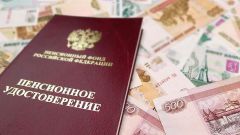Instruction
1
First, determine the base taxof oblozene. Base taxof oblozene (the amount at which tax is paid) is the amount of income of a physical person (employee). It can be obtained in the form of wages, i.e. labour contracts., or other payments, which are issued under civil law contracts: royalties, payment for work performed, etc. payers of the unified social taxand was the organizations and individual entrepreneurs, using hired labor.
2
Determine the rate of tax. The rate of taxhas a regressive scale, that is, with a higher amount charged a smaller percentage. So, with amounts of from 0 to 280 000 RUB scale taxand looks like this: the Federal budget (FB) – 6%, Pension Fund of Russia (PFR) – 14%, Territorial funds of obligatory medical insurance (TFOMS) – 2%, Federal Fund of obligatory medical insurance (FFOMS) – 1.1%, the social insurance Fund (SIF) – 2.9 percent. With this distribution, the typical load on the salary of the employee is 26%. The second limit and the second scale intended for income from 280 001 to 600 000 rubles inclusive: FB – 2,4%, PFR at 5.5%, TFOMS – 0,5%, FFOMS – 0,6%, FSS – 1%. And the third limit and the third scale are intended for incomes over 600,000 rubles: FB – 2,0%, PFR is 0%, TFOMS – 0%, FFOMS – 0%, FSS – 0%.
3
Multiply the base taxof oblozene (amount of wage) contribution rates for the corresponding scale. Example: salary of employee is 60 000 RUB. Then the rate of the unified social taxand: 6 +14 + 2+ 1,1 +2,9 = 26%. The amount of the unified social taxand subject to deduction in the budget: 60 000 RUB * 0,26 = 15 600 rubles the amount of the remuneration must not be reduced by the amount of income tax. Thus there was a double taxoblezenie the same amounts.
Note
Unified social tax is not accrued: income of the disabled in all disability groups, to benefits and compensation, taxable on incomes of physical persons on the amount of compensation (severance in the amount of compensation for unused vacation). Not included in the taxable base the amount of insurance premiums that the company paid for their employees to the funds of voluntary health insurance during the insurance period. In addition, not included in taxable income and any payments that the company made at the expense of their profits (not referring to such payments for expenses).


